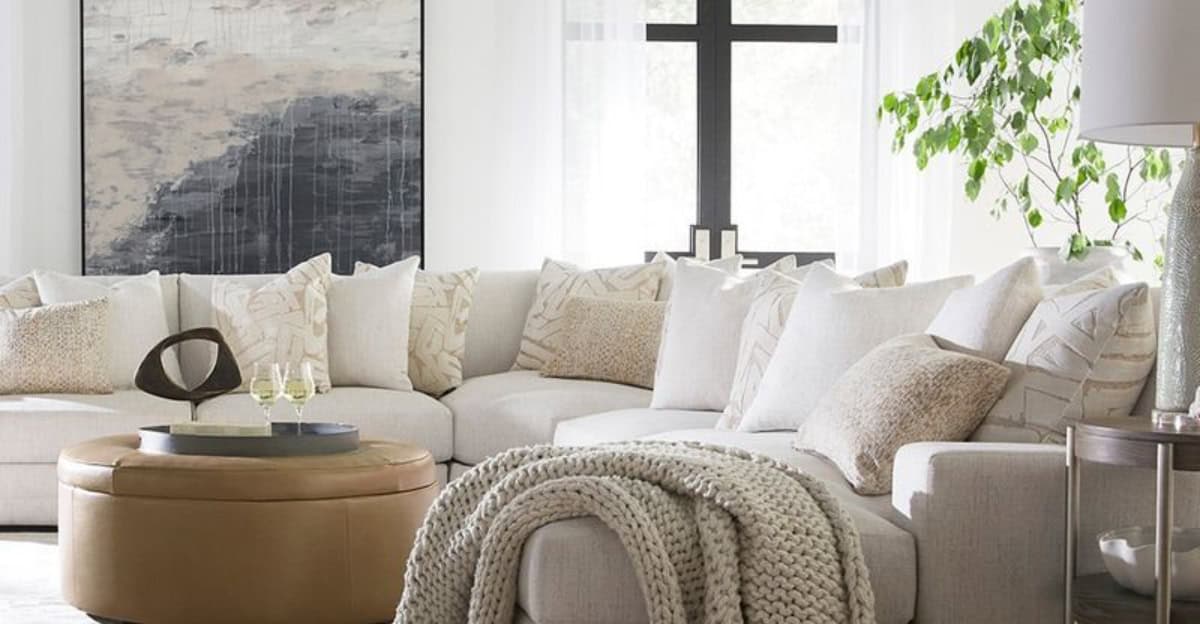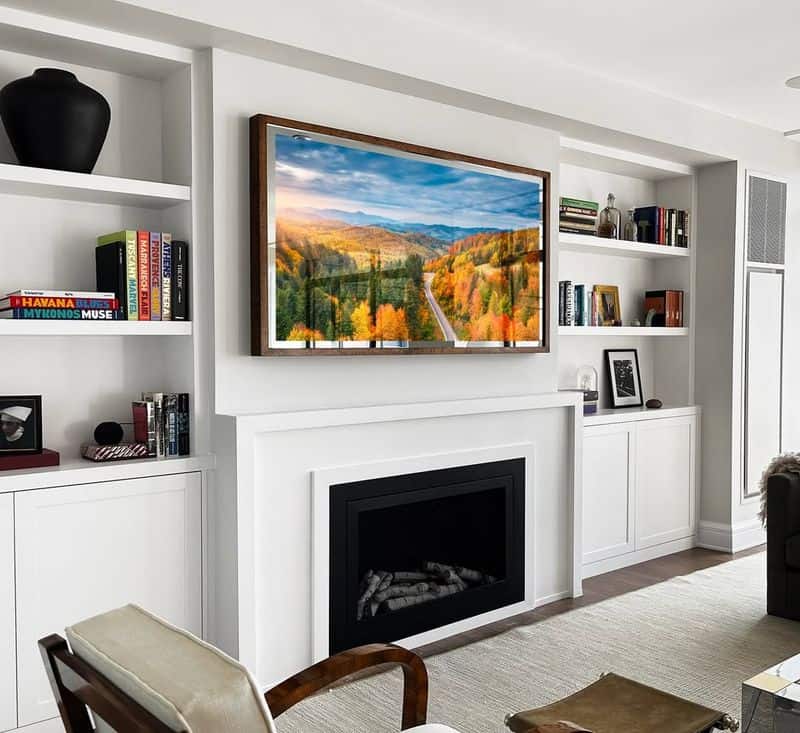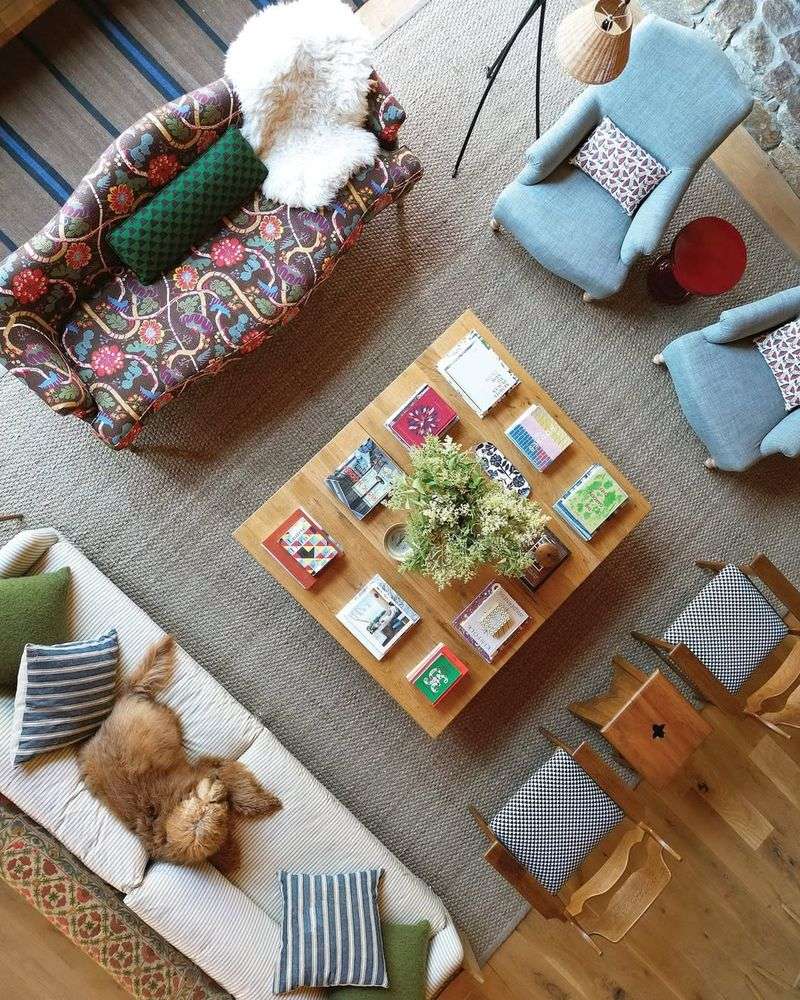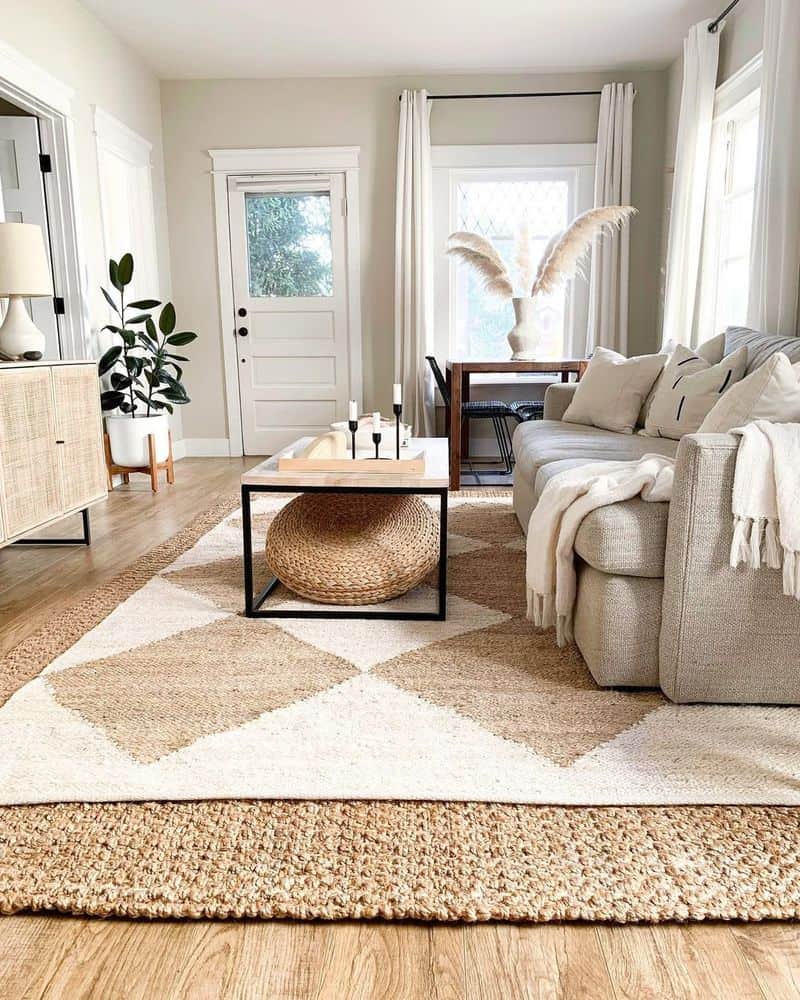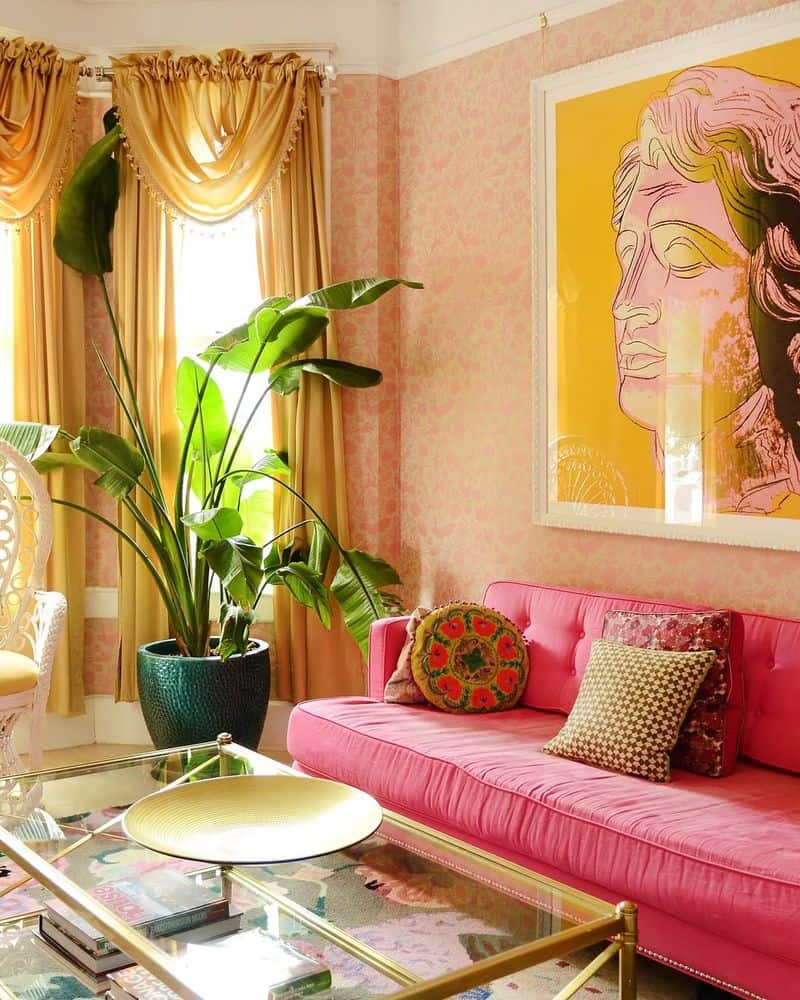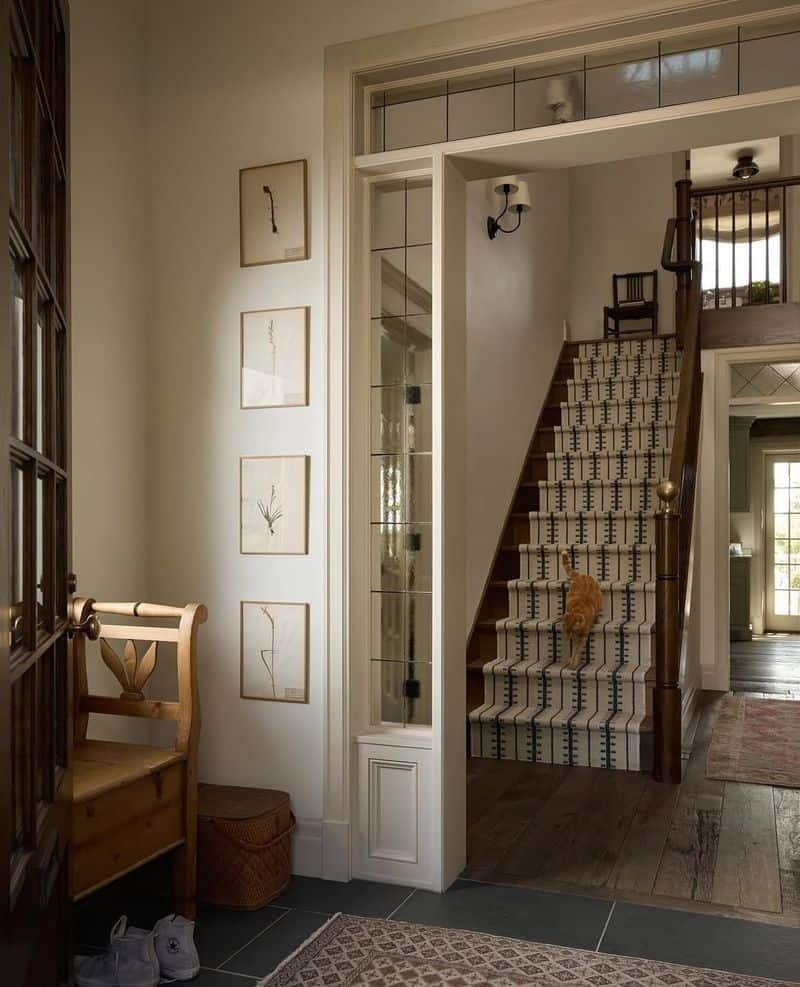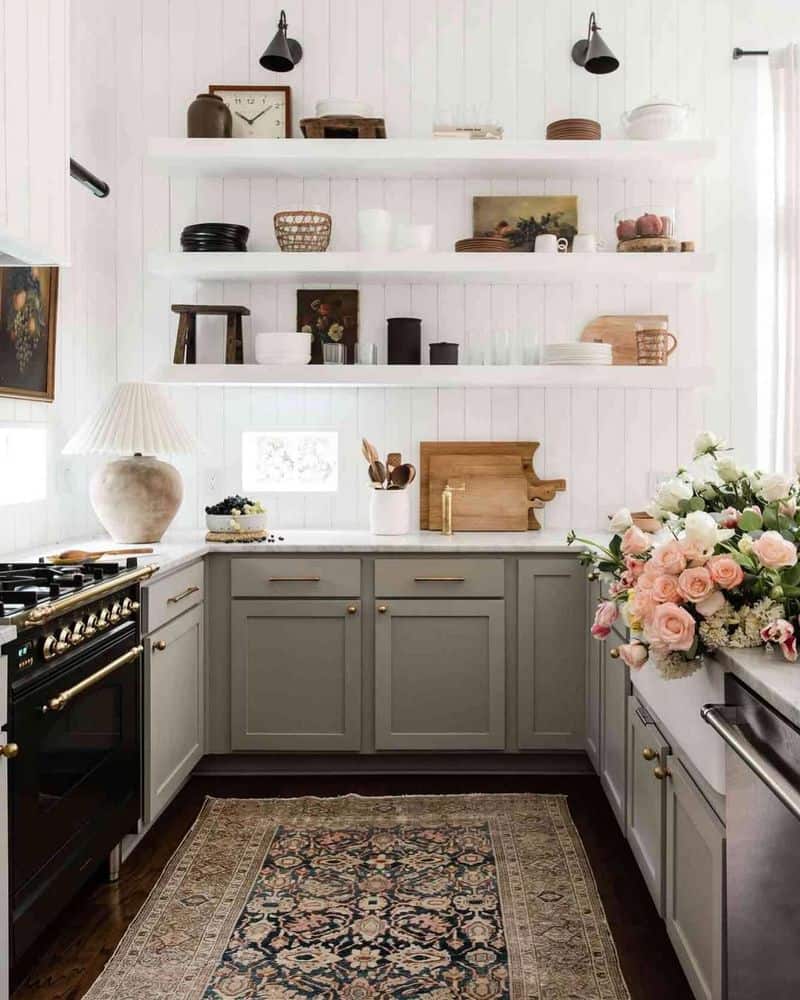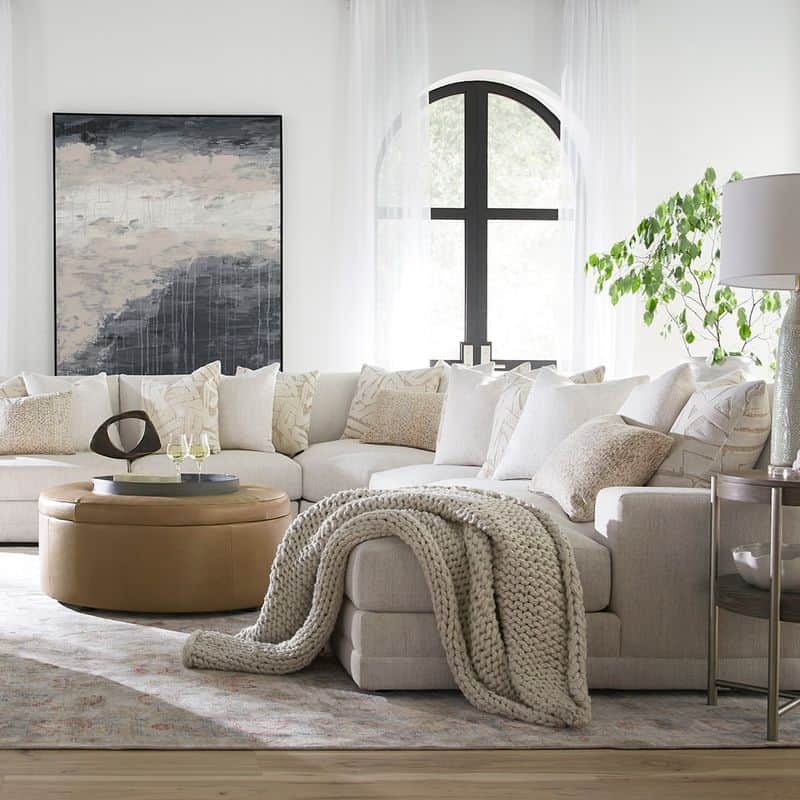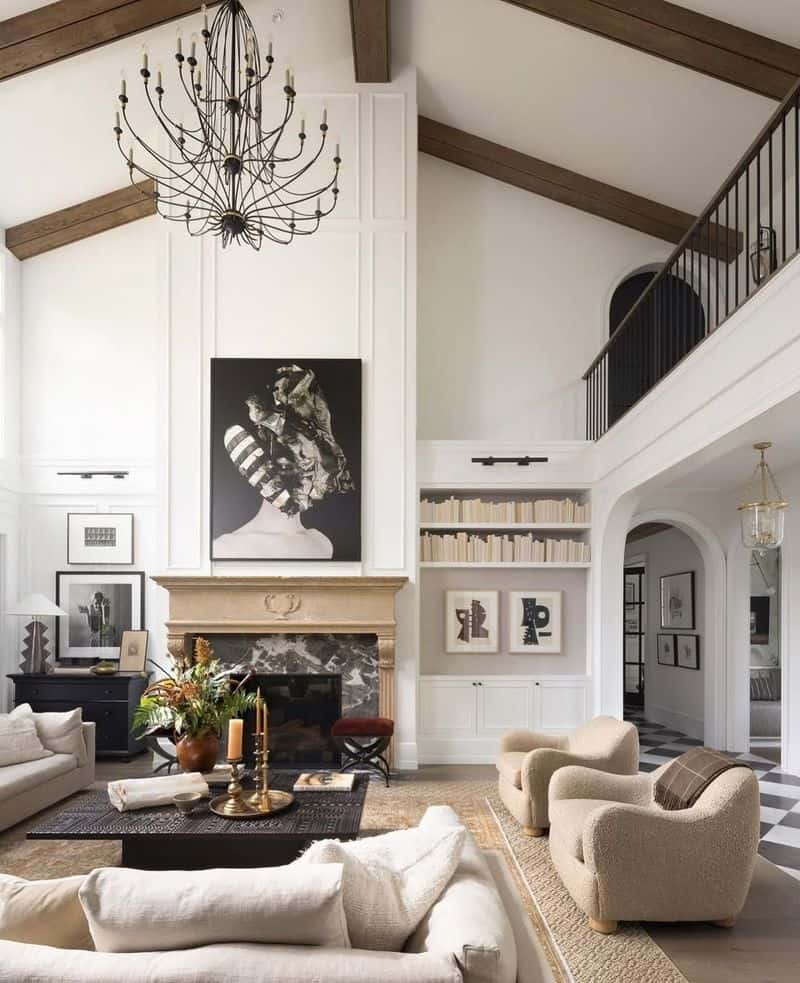Welcome to the humorous world of home design faux pas! We’ve all been guilty of falling into certain design traps that might make professionals shake their heads in dismay.
Whether it’s the allure of matching furniture or the temptation of a ‘Live Laugh Love’ sign, some elements are universally cringeworthy to those with a keen eye for style.
Let’s explore 10 common blunders and find out why designers might cringe at their sight.
And who knows? Maybe these observations will inspire you to make a change or two.
1. Exposed Televisions
Televisions can dominate a room like an uninvited guest refusing to leave. Designers cringe at exposed TVs because they often draw attention away from more aesthetically pleasing elements.
Placing a TV in a cabinet or using a creative cover can help.
Consider incorporating art or books around the screen to soften its impact. Instead of letting it rule the space, the TV can become part of a balanced design scheme.
A little creativity can transform this eyesore into a subtle addition, allowing other design elements to shine.
2. Matching Furniture Sets
Matching furniture sets might seem like a safe choice, but they can create a monotonous and uninspired look. It’s like wearing a three-piece suit to a beach party—unnecessary and overly formal.
Mixing different styles and textures can add character and depth, making a space much more inviting. Don’t be afraid to experiment with contrasting elements.
By breaking up a matchy-matchy vibe, you’ll cultivate a lively atmosphere that feels more personalized and less like a showroom display.
3. Windows without Curtains
Bare windows can leave a room feeling unfinished and stark, almost like leaving the house without wearing shoes. Curtains or blinds add warmth, privacy, and style.
Selecting fabrics and designs that complement the room’s decor can make a significant difference. They can enhance the architectural elements and create a cozy ambiance.
Whether sheer or heavy, the right window treatments transform bare glass into a welcoming feature, bringing balance and elegance to the space.
4. Rugs that Are Too Large/Small
Rugs that are too big or too small can disrupt the harmony of a room, much like wearing shoes three sizes too large or small. Finding the right size is crucial.
A rug should anchor the furniture, not leave it adrift. The wrong size can make the room feel off-balance and uncomfortable.
Measuring and selecting a rug that fits the space perfectly can enhance the room’s flow, pulling the decor together into a cohesive and comfortable design.
5. One Accent Wall
The lone accent wall can be the design equivalent of a bad haircut—bold but potentially regrettable. Designers prefer more integrated approaches.
Instead of isolating one wall, consider using color or texture throughout the room. This creates a more harmonious appearance.
By distributing color or pattern evenly, you avoid the jarring effect of a single statement wall, achieving a more elegant and cohesive look.
6. Bland Entries
The entryway is the first impression of a home, yet many overlook its potential. A bland entry can feel like a handshake without eye contact.
Adding artistic touches, like mirrors, plants, or artwork, can create a welcoming ambiance. These elements make the space inviting and reflective of your personality.
With thoughtful design, the entry can set the tone for the entire home, transforming an overlooked space into a memorable welcome.
7. Unorganized Open Shelving
Open shelving can be a beautiful addition if done right, but chaos often reigns. Disorganized shelves create visual clutter, akin to an unmade bed in an otherwise tidy room.
Organize items by color or type to create a pleasing display. Consistency and neatness turn open shelves from messy to mesmerizing.
With careful curation, open shelving becomes a functional and stylish feature, enhancing rather than detracting from your kitchen’s aesthetic.
8. Oversized Furniture
Oversized furniture can overwhelm a space, like trying to fit a whale into a fishbowl. Finding pieces that fit the room’s scale is key.
Large furniture can make rooms feel cramped and unwelcoming, whereas appropriately sized pieces promote flow and relaxation.
Thoughtful selection and placement create an inviting environment, allowing for movement and comfort without sacrificing style.
9. Blocking Natural Light
Natural light is a room’s best friend, yet many design choices obstruct it. Blocking light with heavy curtains or furniture is like wearing sunglasses indoors.
Embrace the glow by arranging furniture to maximize sunlight and using lighter window treatments.
By allowing natural light to fill a space, you enhance its warmth and vitality, creating a lively and inviting atmosphere.
10. Live Laugh Love Signs
‘Live Laugh Love’ signs have become a cliché in the world of home decor, akin to a meme that has overstayed its welcome. While the message is positive, the execution is often lacking.
Consider more personalized artwork or unique decorative pieces that truly resonate with your home’s style.
By choosing original decor, you reflect a genuine personality rather than following a well-trodden trend, turning your home into a unique and expressive haven.

